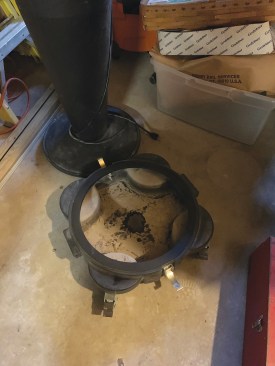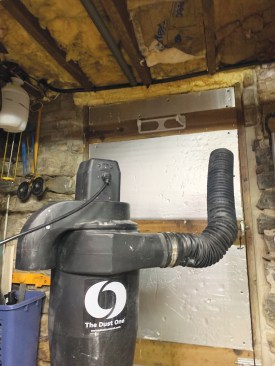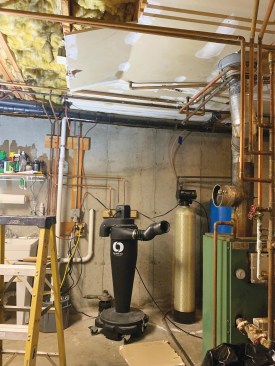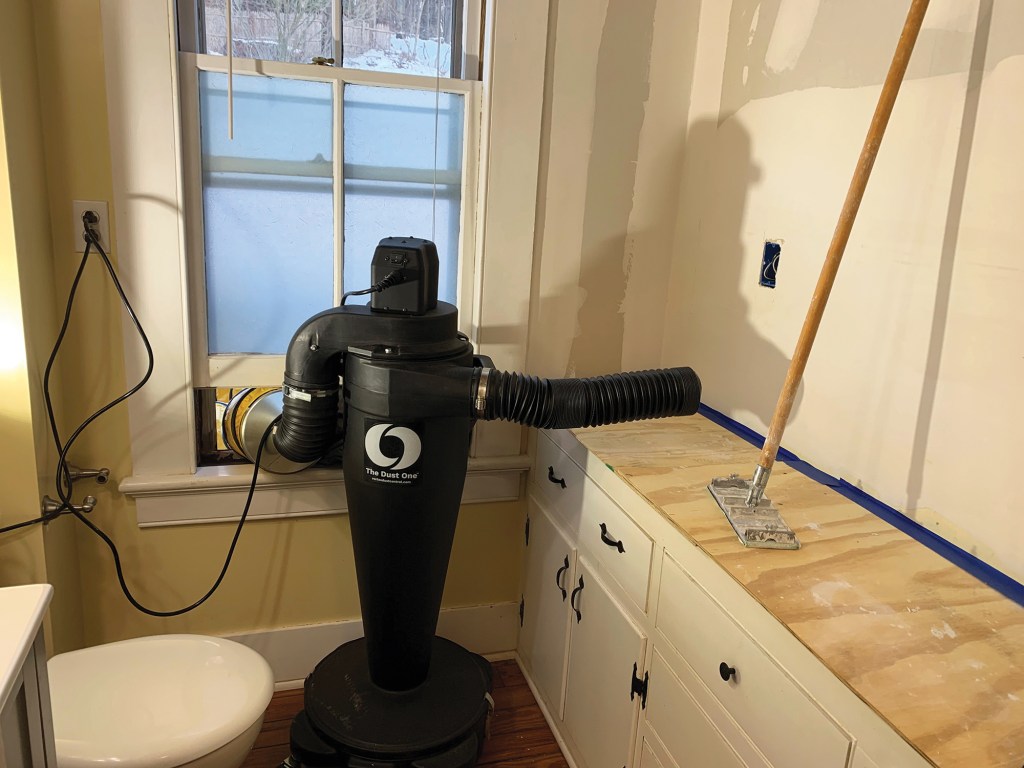I learned ages ago that clients wouldn’t appreciate my flawless miters if they came home to find their living spaces covered in sawdust. Over the years, I’ve amassed a sizable collection of vacuum-attached power tools and dust containment products, but I’d never found an affordable—or portable—option for filtering breathable air within a workspace until I discovered the Dust One, a 25-pound air scrubber on wheels from Vortex Dust Control Solutions.
Cyclonic design. At first glance, all I could think about was the robot in the classic TV series Lost in Space, but the manufacturer of the Dust One assured me that its distinct, robot-like appearance is purely functional. Instead of trapping airborne contaminants in filtration material, it sucks particles into a cyclone that spins them out via centrifugal force and drops them into a collection bin at the bottom. Essentially this is a compact, portable variation on the technology that many woodworking shops use to capture sawdust.

Centrifugal force drives airborne particles away from the vortex and drops them into a collection bin at the bottom, which can be emptied by a HEPA vac when it fills up.
A significant advantage of cyclonic design is that it eliminates the need for expensive filters that clog up and frequently have to be replaced. The maker claims that the Dust One removes over 99% of airborne contaminants and meets OSHA standards. For emptying the collection bin when it fills up, Vortex suggests using a HEPA vac.
Double duty. As with other air scrubbers, this device can be set up in one place and run continuously to make air safer to breathe and prevent dust from escaping the work zone. To create negative air pressure, the 4-inch round exhaust port is easily connected to flex duct and vented outside.
A unique feature of the Dust One is its extendable intake port, which enables users to capture dust at the source, before it spreads throughout the work zone. Lockable wheels and handles on both sides of the top-mounted motor make wheeling the unit from place to place effortless. Its noise level (55 dB according to the specs) was noticeable but not bothersome, even when it was running continuously.

In order to capture dust at the source, the flexible inlet extends almost 3 feet, bends in any direction, and stays where it’s put.
Performance. Over a matter of months, I put the Dust One to use on every dirty job that came along: mostly drywall sanding and woodworking but also a bit of concrete grinding and some demoli-tion work. I did not have the ability to perform dust sampling, so I can’t provide quantitative evidence, but qualitatively speaking, I think the difference in the air between when the machine was running and when it was off is like comparing the air in Aspen to the air in Mexico City.
After pole-sanding a roomful of drywall on a hot summer day, I was particularly impressed that the visible dust accumulation on horizontal surfaces was negligible, and what stuck to my face did not make me look like a mime. I want to believe that if this air scrubber was used alongside a vacuum-operated sanding system, one could possibly dispense with dust curtains altogether; I should test out that hypothesis on my own house first. Happily, a few weeks after I started using it in my home workshop, which shares a basement with our washer and dryer, I noticed that my wife was no longer asking me if I could “please cut those damn things outside.”
According to Vortex, the Dust One is particularly well suited for demolition work. On a recent project, it did a splendid job of tamping down the mess generated from tearing out drywall, fiberglass insulation, and other modern building materials. The next time I have to gut out a roomful of 100-year-old lath and plaster, I will be more than happy to be able to put it to use.

Weighing only 25 pounds, the Dust One isn't heavy, but its bulky form factor makes transport to the jobsite awkward.
On the jobsite, the Dust One was nimble as well as effective. Getting it to the job was not quite so effortless. It’s half the weight of my benchtop power tools but twice as bulky. The top-mounted handles are useful for wheeling it around but not so much for carrying. On those occasions, what worked best was to grab it around the middle, tip it so it was horizontal, and carry it under one arm as if it were a rug. The unit and the box containing the manufacturer’s 6-inch-by-25-foot exhaust duct wanted the bed of my compact pickup almost all to themselves. But that serves me right for downsizing.
The Dust One is made entirely in the USA, assembled in a small shop, and not subject to supply chain issues. It’s available directly from the manufacturer for $1,035. A starter kit that includes exhaust duct costs $1,154. vortexdustcontrol.com
Photos by Tom O’Brien
